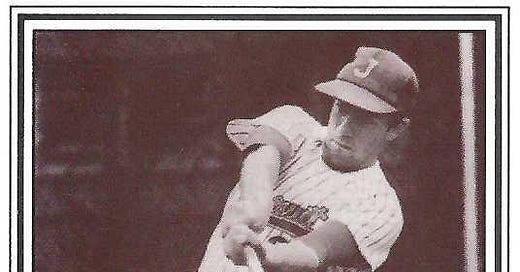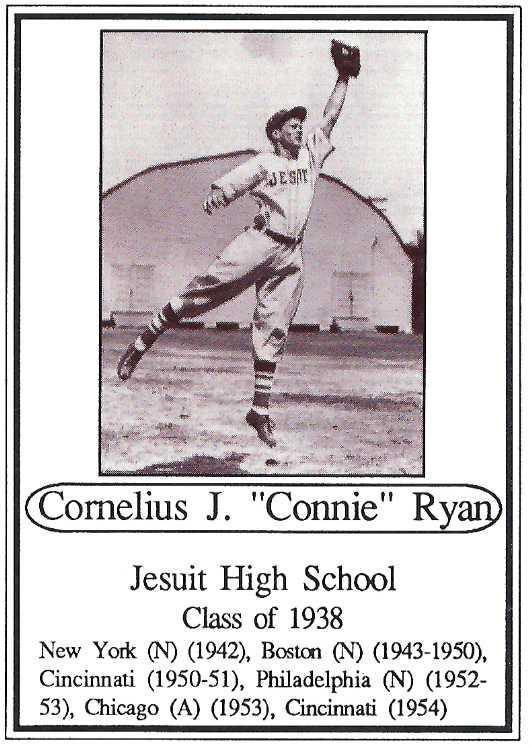The Rich Baseball Tradition of New Orleans Jesuit High School Produced Its Share of Major Leaguers
An IBWAA writer evaluates the contributions of a New Orleans school to the game
IBWAA members love to write about baseball. So much so, we've decided to create our own newsletter about it! Subscribe to Here's the Pitch to expand your love of baseball, discover new voices, and support independent writing. Original content six days a week, straight to your inbox and straight from the hearts of baseball fans.
Pregame Pepper
Did you know…
. . . Will Clark was the leading hitter for the 1984 USA Olympic team that won the Silver Medal. He batted .429, with three home runs and 9 RBIs. He hit a home run in his first major-league at-bat against Nolan Ryan in 1986.
. . . Brothers Charlie and “Tookie” Gilbert had an older brother Larry Jr., who played a season with the New Orleans Pelicans before his career was ended due to a heart ailment.
. . . Connie Ryan was Atlanta’ third base coach when Hank Aaron hit his 715th home run in 1974.
. . . During World War II, “Fats” Dantonio held a job in a shipyard while playing for the hometown New Orleans Pelicans. He only played in home games.
. . . Rusty Staub was the first baseman in an all-rookie lineup fielded by the Houston Colt .45s on September 27, 1963. Houston lost to the Mets, 10-3.
Leading Off
The Rich Baseball Tradition of New Orleans Jesuit High School Produced Its Share of Major Leaguers
By Richard Ciucchi
When you walk through the classroom halls of Jesuit High School in New Orleans, it easy to get overwhelmed by all the photos of the institution’s sports teams dating back to the 1920s. Prominent among them are the baseball teams, which produced 21 state high school championships and 17 American Legion state championships.
Jesuit is well-known locally for its long-time baseball success in New Orleans. One of the persons most familiar with the tradition and success of Jesuit baseball is David Moreau, former Jesuit High School head baseball coach and current athletic director. He attributes the achievements of the legendary baseball program to several factors.
Moreau noted the baseball program was fortunate to have the support of its administration throughout the years. Moreau said, “They provided a great setting to teach character and build outstanding young men, and it extended to the athletic teams.” He added, “Coaches were expected to instill the school’s values in their players on the athletic fields, too.”
Moreau said the elevated level of baseball competition in the city throughout the years helped drive the Jesuit teams to excellence. As a former coach, he stressed with his players that doing the “little things” better than their opponents could oftentimes differentiate their team.
Moreau said, “The program had great meaning for multiple generations of student-athletes.” Incoming players become well aware of the expectation to uphold the school’s long tradition. Former players maintain connections with the school. For example, Moreau occasionally arranged for noteworthy alumni like Staub, Clark, and Connie Ryan to address his squads. He said the former major leaguers invariably spoke about what Jesuit meant to them while emphasizing a team approach. Moreau said that at the opening of Jesuit’s new baseball stadium in 2012, many former players attended, including former major leaguers.
The Jesuit baseball program has produced its share of professional baseball players over the years. The most recognizable alumni are former major-league All-Stars Rusty Staub and Will Clark, whose major-league achievements are well-documented. Yet the list of Blue Jay alumni who advanced to the majors, as well as those who populated college rosters all over the country, goes well beyond them.
Here’s a brief review of a few other Jesuit High School alumni that reached the majors.
Charlie Gilbert was among the first Jesuit prep stars to advance to the majors. Gilbert played for Jesuit from 1934 to 1937. He was a member of the 1936 squad that went undefeated and captured the school’s sixth consecutive state prep championship. In 2003 the Times-Picayune ranked the best high school baseball teams of all time from the New Orleans area and selected the 1936 Jesuit Blue Jays as Number 1. Seven of the players, including Gilbert, went on to play professionally.
Charlie began his professional career in 1939 under the tutelage of his father Larry Gilbert Sr., who had become manager of Nashville that season. Gilbert made his major-league debut in 1940 at age 20 with the Brooklyn Dodgers. He went on to play in five more major-league seasons. He slashed .229/.302/.299, with only six homers and 55 RBIs in 364 major-league games.
One of Charlie ‘s teammates on the 1936 team was sophomore Connie Ryan. He was the first athlete to receive a full baseball scholarship at LSU, where he played his freshman season in 1940 before signing a professional contract with the Atlanta Crackers. The infielder made his major-league debut with the New York Giants in 1942 and went on to a 12-year major-league career that ended in 1954. Ryan made the National League All-Star team in 1944 with the Boston Braves and appeared in the 1948 World Series with them. His major-league stats included a slash line of .248/.337/.357, with 56 home runs and 281 RBIs in 1,184 games.
John “Fats” Dantonio played for Jesuit in 1935-1937 and was the first-team All-Prep catcher on the 1936 Jesuit championship team. He initially signed a pro contract by the St. Louis Cardinals in 1938. Dantonio was promoted to his hometown New Orleans Pelicans in 1942. With the shortage of professional players during WW II, he got his first opportunity as a major-leaguer in three games with the Brooklyn Dodgers in 1944. He followed with 47 games for the Dodgers in 1945, when he batted .250 with 11 RBIs. Those were his only major-league seasons.
Ralph “Putsy” Caballero was an All-State basketball player on Jesuit’s state championship team and represented Jesuit on the city’s American Legion All-Star team. He is best known for signing with the Philadelphia Phillies in 1944 as a 16-year-old for an $8,000 bonus. He made his major-league debut with the Phillies in September 1944, becoming the youngest position player since the post-World War I era. Caballero was a member of the 1950 “Whiz Kids,” Philadelphia’s first pennant-winner since 1915. He finished with a .228/.273/.274 slash line, with only one home run and 40 RBIs in 322 games.
Charlie Gilbert’s younger brother Harold “Tookie” Gilbert was a high school phenom with Jesuit from 1943 to 1946. Tookie’s father Larry Gilbert Sr. held a highly publicized lottery with five major-league suitors in October 1946 to determine Tookie’s future employer. The New York Giants were the winner and signed him to a contract with a $50,000 bonus. He played for his father in Nashville in 1949, when he batted .335, with 33 home runs and 122 RBIs. But his minor-league performance didn’t translate to the majors, as he struggled against big-league pitching. In two seasons with the Giants (1950 and 1953), he slashed .203/.299/.286, with seven home runs and 48 RBIs in 183 games.
Johnny Giavotella played for Jesuit from 2002 to 2005. The 2005 Blue Jay team won the state prep championship. He was a three-year starter for the University of New Orleans from 2006 to 2008. In 2007, Baseball America named him the top sophomore second baseman in the country. He was drafted by the Kansas City Royals in the second round in 2008. Giavotella spent parts of seven seasons in the majors, including stints with the Royals, Angels, and Orioles.
Richard Cuicchi has been a SABR member since 1983 and regularly contributes to BioProject and Games Project. He writes about New Orleans baseball history for CrescentCitySports.com.
Extra Innings
On the subject of New Orleans, the Super Bowl was held in New Orleans on Sunday, which allows the sports world to focus on the most important time of year - baseball season!
As part of preparing for the 2025 baseball season, we look back at the best writing of 2024. The IBWAA partners with SABR and they are holding their annual SABR Analytics Research Awards. Voting is open until Friday, Feb. 14, and you can vote through a link on the IBWAA website: http://ibwaa.com/sabr-voting. Everyone is welcome to vote, not just IBWAA and/or SABR members!





